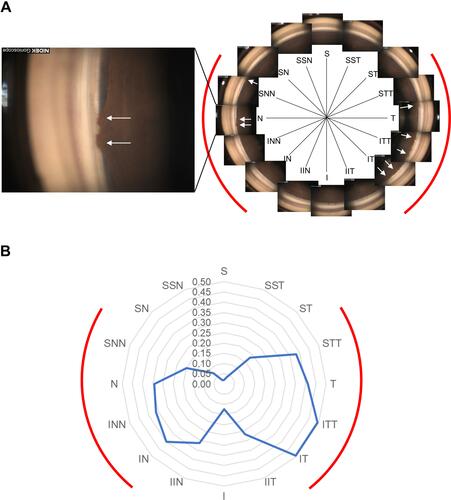Figures & data
Figure 1 Representative gonioscope GS-1 images with PAS formation after µLOT in a 360-degree view of the angle, and the distribution of the average PAS formation rate in each angle position.

Table 1 Continuous Preoperative and Postoperative Variables
Table 2 PAS Formation Frequencies and Rates After µlot Classified by Categorical Variables in Demographic Data
Table 3 Possible Associations Among PAS Rates and Various Continuous Variables Analyzed by the Simple Linear Regression Model
Table 4 Possible Associations Among PAS Rate and Various Variables Analyzed by the Mixed-Effect Model
